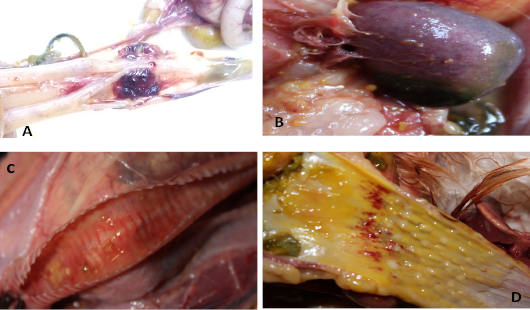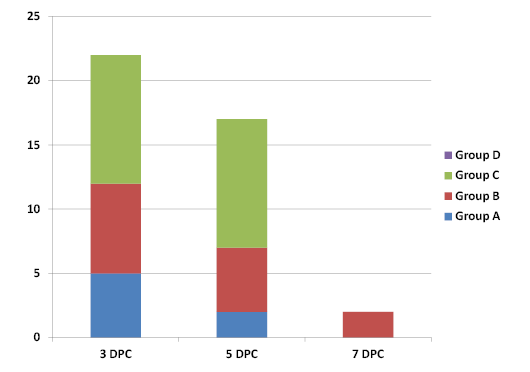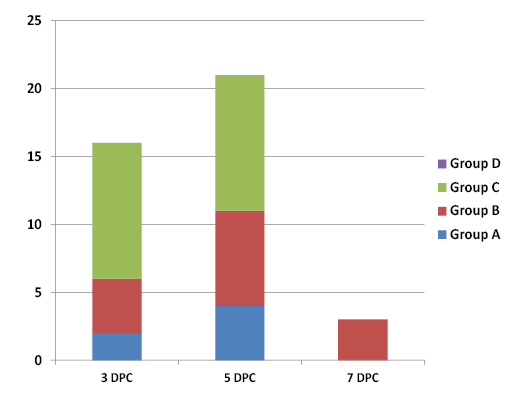Enhanced Protection and Blocked Viral Shedding for Broiler Chickens in Challenge with Newcastle Disease Virus Genotype VII by Generation of Oil Inactivated Vaccine Antigenically-Matched to The Endemic Virus in Egypt
Enhanced Protection and Blocked Viral Shedding for Broiler Chickens in Challenge with Newcastle Disease Virus Genotype VII by Generation of Oil Inactivated Vaccine Antigenically-Matched to The Endemic Virus in Egypt
Sameh Abdel-Moez Ahmed Amer1*, Aly Mohammed Ghetas1, Asmaa Mahmoud Maatouq1, Hagar Magdy Ahmed1, Khaled Mohamed El-Bayoumi1, Mohamed Abd El-Rahman Bosila1, Ahmed Ali El-Shemy2
Post mortem gross lesions recorded in control group C 3 days pc. A: ulceration and hemorrhages in caecal tonsils. B: Marked splenomegaly. C: severe bloody tracheitis. D: hemorrhagic spots and petechial hemorrhages on proventriculus.
Results of humoral antibody curve throughout the vaccination course and after challenge with VNDV “NDV-CH-EGY-GIZA-VVTNRC-2021” in all experimental groups A, B, C, and D.
Oropharyngeal viral shedding at days post-challenge (DPC) in all tested groups shows a decrease and stop of shedding in vaccinated group A with NDV GVII vaccines compared to other tested groups.
cloacal viral shedding at days post-challenge (DPC) in all tested groups shows a decrease and stop of shedding in vaccinated group A with NDV GVII vaccines compared to other tested groups.










